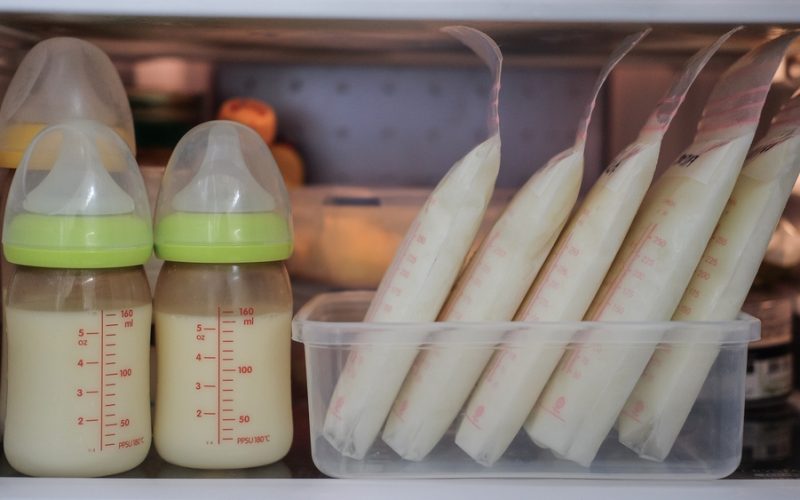
How to Store Breastmilk
January 15, 2019

As someone currently taking a deep dive into the world of pumping, I’m excited to share with you evidence-based guidelines for milk storage, as well as some of my own tips and tricks I’ve learned in the many hours of my life spent pumping, storing, and preparing breast milk. Check out our Episode on Breastfeeding for more!
If you’re a pumping mom too, please remember to hydrate and take time for yourself!
Milk Storage Rule of 4s:
Once pumped, 4 hours at room temperature, 4 days in the refrigerator, 4-6 months in a standard freezer.
The CDC (US Center for Disease Control) states that 2 hours at room temperature is the safest for milk that’s been previously frozen OR milk that a baby started drinking but then didn’t finish. I would say we definitely don’t always follow this.
Tips and Tricks
- Label the milk with name and day it was pumped. There are all sorts of fancy labels out there, but I’ve found that good old freezer tape ($4) works great. I label each bottle with a vertical stripe of tape on the side with my baby’s name (or your last name, whatever your daycare prefers), then I place another smaller strip on the lid of the bottle with the day of the week it was pumped (e.g. TUES).
- Leave a little bit of room in (specific for milk storage) freezer bags. Milk has a high water content so expands when it freezes.
- Use the oldest milk first. This may seem obvious, but thaw what has been there the longest first (we try to start rotating in the frozen breast milk around 3 months, so that it’s never quite in the freezer for the full 4 months)
- Thaw frozen breast milk slowly. Do not microwave breast milk – it destroys it! There are a few ways to thaw frozen milk, including leaving it in fridge overnight (stand it up in a container so it doesn’t spill when melting), or running under warm water (wastes too much water for us).
But the easiest way that we have found to reheat milk is:
- Microwave a cup of water for 30 seconds
- Take cup of water out of microwave and put the frozen milk bag into the cup of water
- Wait 2 minutes
- Serve!
- When traveling with breast milk, use a freezer bag with ice packs, then use or refrigerate right away ( <24 hours if possible). Check out these rules from the TSA about traveling with breast milk on a plane (summary: you can do it!); bonus, that link also has information about traveling with children.
- Use older (but not expired) milk by putting it into foods for your child >6 months old. At some point, my kids got picky about which frozen breast milk they would drink and ultimately, anything older than a week was rejected/not worth the battle. So we started putting it into other foods they were eating (purees, oatmeal, etc). “You WILL consume that immune-boosting magic I worked so hard to create!
- Don’t re-freeze breast milk that has been thawed. Similar to thawing and refreezing other frozen items, it really loses its flair. Not dangerous, necessarily, though it does have potential for more bacteria exposure, but not delicious either.
- Consider discarding leftover breast milk that baby doesn’t finish. Similar to #5 – less delicious, more potential for bacteria exposure.
- Cleaning your pump (CDC summary here). My summary: soap and water. Though I have a trick that I use at work – I rinse as well as I can then put all the pump parts and the bottles of milk I’ve pumped into a dry bag and then put all of it into the refrigerator. Then when I go to pump again, I just leave the bottles of milk (labeled! See #1) take my pump supplies, pump, rinse, put back in fridge and repeat! No time for bacteria to build up because they’re always in the fridge or on my boobs. Downside is it can be a bit cold at the start of pumping.
More resources about milk storage and pumping: